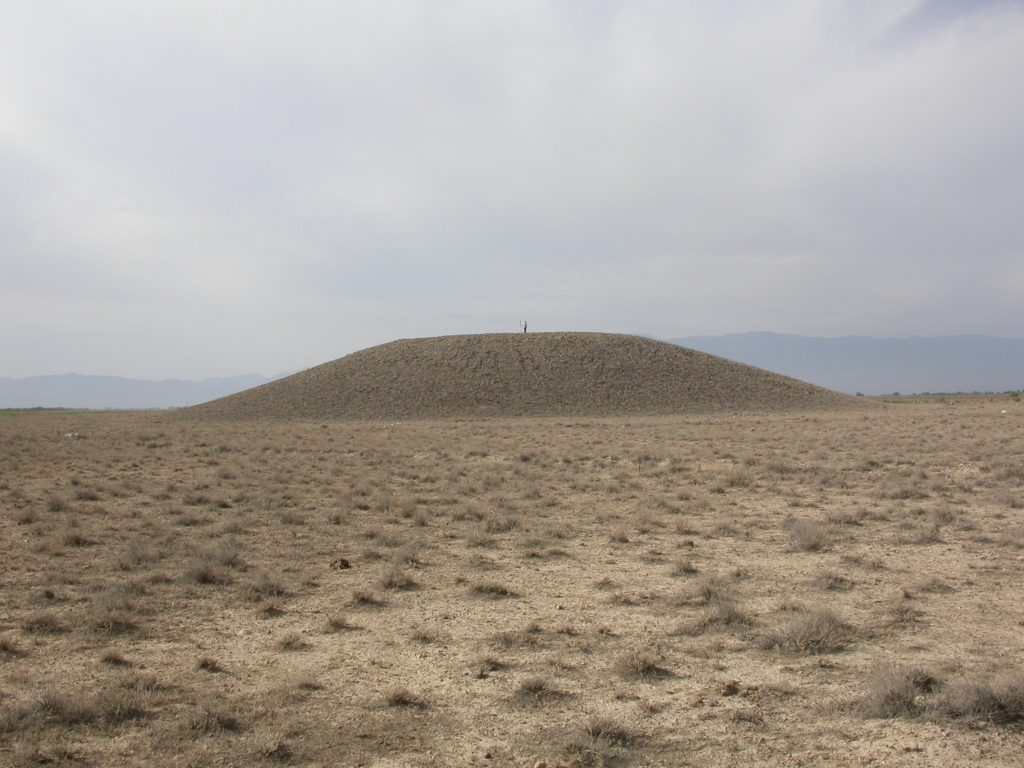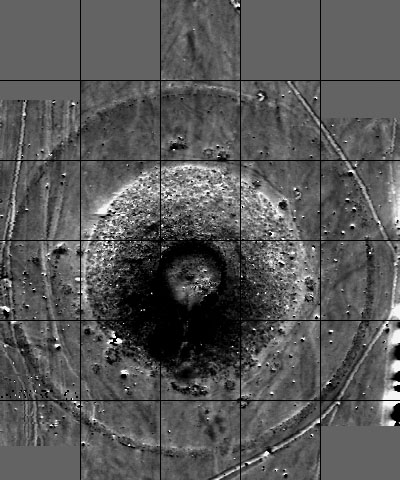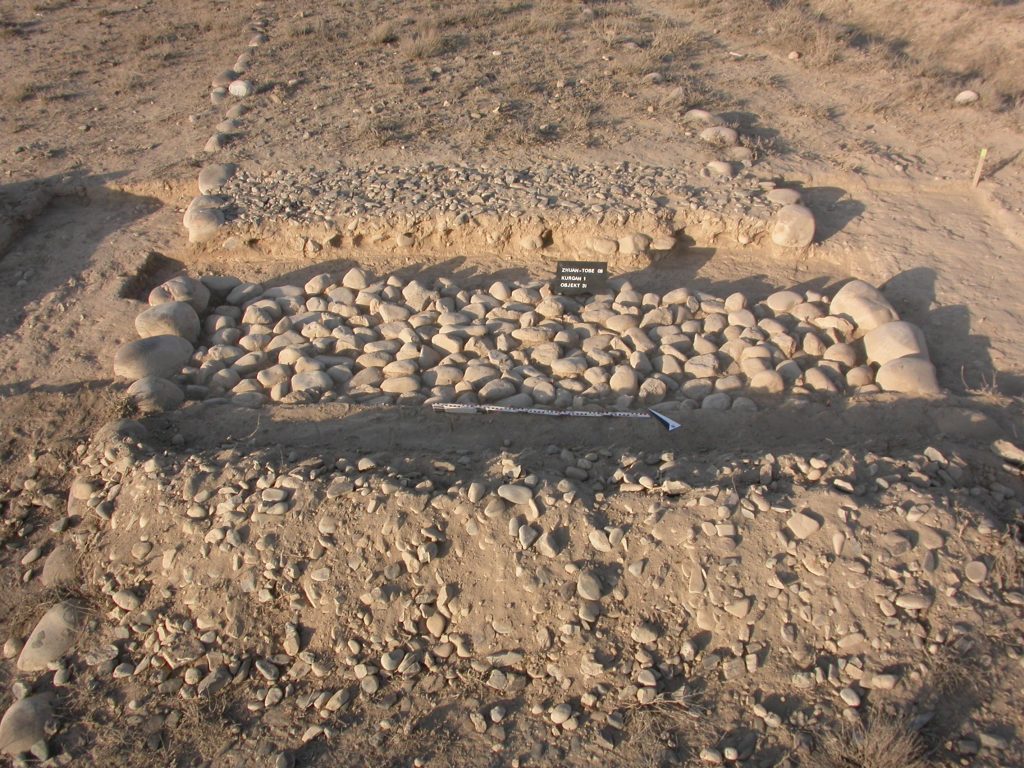The “land of seven rivers” – Zhetsyu – in southern Kazakhstan is a highly significant region in archaeological terms and an important centre of early nomadic culture given the large number of kurgan necropolises from the Scythian period (5th–3rd century BC). In 2008 the DAI’s Eurasia Department began geophysical exploration at various sites with multiple grave mounds. It found that all large kurgans were surrounded by stone constructions; in the case of Kurgan 1 of the Žoan Tobe necropolis (Almaty district) they are almost completely preserved. With a height of 11 metres and a diameter of 113 metres, this kurgan is the biggest and evidently the most important kurgan in the necropolis.

Subsequent excavation has brought to light unfurnished graves under the stone constructions. The entire site was once surrounded by a paved road, a feature that has not been documented at any other Scythian monument. Hence road building is now attested in the early Iron Age (5th century BC) for the central Asian region.

